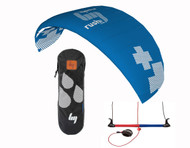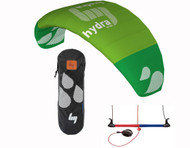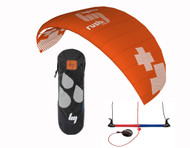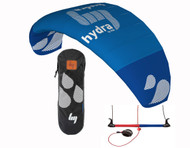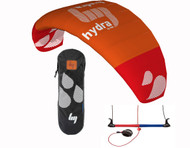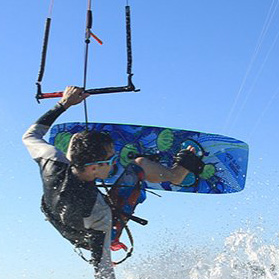
I'm new! I'm looking for a trainer kite...
I'm looking for a beginner, entry-level power kite for...
I'm looking for a board...
- Home
- Kiteboard
- Learning Center
- Learn About Inflatable Kites
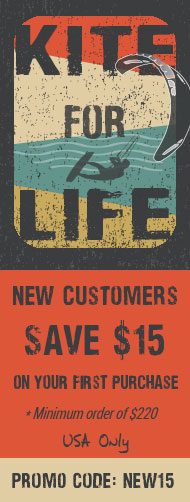
Categories
Brands
Current Top Sellers
-
$279.00

-
$389.99$379.99
-
$349.99

-
$439.99$435.45
-
$348.50$345.50
Learn About Inflatable Kites

What is an Inflatable Kite?
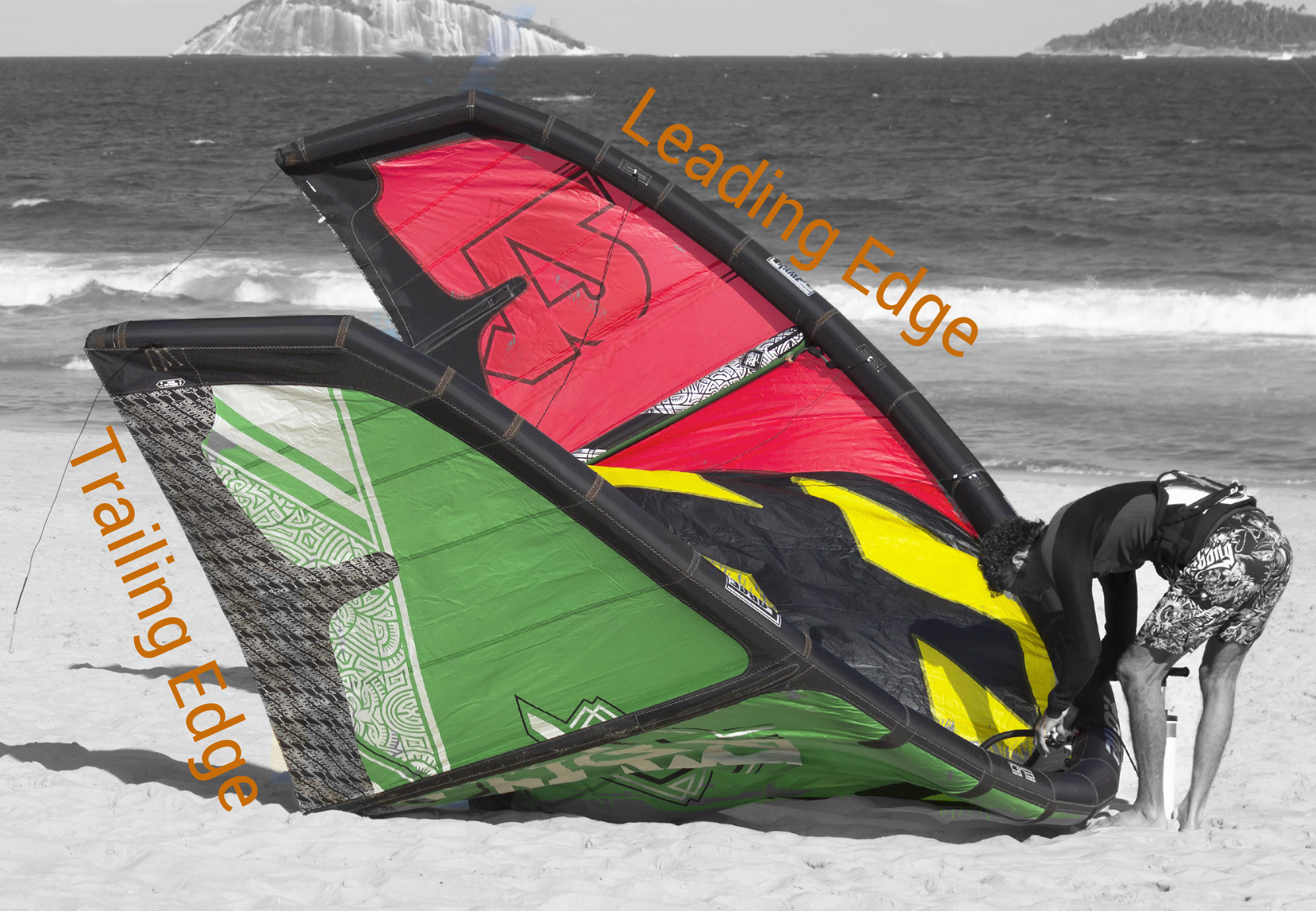
Let's start by learning a couple buzz terms. Both are used as acronyms.
LEI Kites
If LEI comes up in the conversation it stands for "Leading Edge Inflatable Kites". This is referring to the front edge of the kite; the edge that points into the wind. The leading edge, therefore a LEI, refers to a Leading Edge Inflatable Kite.
SLE Kites
SLE stands for "Standard Leading Edge". When you hear someone talk about a SLE kite they are talking more about the shape of the arch and the fact that the leading edge is supported by the bridal. This differs from a Traditional C style kite that is supported at the four corners.
Inflatables are Used on Water, Snow, and Sometimes Land
Although inflatable kites were designed originally for the water, many kiters also use them for snow-kiting and kite-landboarding. When it comes to kiting near breaking waves, the inflatable is known to be the safest and most reliable design.
Kiteboarders Primarily Use Inflatable Kites
Today, you will find nearly all the kites being used for kiteboarding and kitesurfing are inflatable kites. Your kite is one of the largest investments and as you advance in the sport, you are most likely to have 2 to 3 kites in your quiver. Different kiteboarding kites are used to accommodate different ranges of wind conditions but, could also be used for different riding styles.
When you're learning, it is best not to use your inflatable kite on land because there is a greater risk of damaging it.
History of Inflatable Kites
The original inflatable kite was the WIPIKA. designed by the Leganioux brothers from France.
Line Configuration
Most inflatable kites are set-up to use 4-line. There are a few models which use 5-lines.
To help you understand how and why the 4 lines function...
Imagine a sailboat or a wind-surfer for just a moment.
The front of the sail, Leading Edge (LE), is held in place by the Mast.
The back of the sail. Trailing edge /or Clew(TE), is able to swing outward or to be pulled into "Trim the Sail".
When the sail is closing, we call it "Sheeting-In".
Sheeting is moving a sail or a kite in or out
When the sail is opening, we call it "Sheeting-Out". Technically the main rope which moves the sail is called the "Main Sheet", and thus "Sheeting"refers to adjusting the Sheeting rope. To make this super easy to remember for kiters, I prefer to think of the sail as a giant Bed-Sheet, It looks like one to me! : ).
It's now obviously super easy to imagine that giant sheet moving in and out.
as you "Sheet-in" and "Sheet-Out".
On a 4-line kite. You have 2 front lines that connect to the front of the kite.
(The Mast on a sail, or what we call the "Leading-Edge" (LE) on a kite.)
Those 2 front lines mostly remain at a set length.
The 2 front lines on a kite connect from the LE of the Kite, then merge together (like a "Y") to become your "Center-line"(Stem of the "Y") that passes through a hole in your control-bar and terminating into a "trim-Loop" that connects to your body via your Harness.
To simplify: Just imagine a direct and fixed connection from the front of your kite to your body.
The 2 outside lines (known as steering lines) connect from the back wingtips of the kite directly to the outside ends of your control bar.
Because those back lines are connected directly from the kite to bar...
As you "Sheet-In" and pull your control bar closer, you are directly pulling the back edge of your kite closer as well. Therefore, catching more wind = more power.
Think of a Door
Imagine pulling a door closed. You pull-in and the door moves closer.
You push-out, and the door opens.
** if this example doesn't work, just move yourself to the other side of the door. :)
Now imagine there is a line between the door knob and your hand.
Got it? When using a 4-line inflatable kite (or a sheetable foil kite). It works the same.
Moving your control bar in/out, moves your kites back edge (TE) in/out and you will instantly change the sail or kite's angle to the wind.
Our "Sheetable Foil" page is also helpful to better understand the 4-line set-up.
"Mini 5th Line" The Term "Mini 5th" is easily confused with a 5-line kite.
A Mini-5th is common safety system on a "4-line" kite. A Mini-5th is Not a 5-line kite,
The difference is that a 5-line kite has 5 full length flying lines, whereas, a mini-5th is a much shorter line.
Which is the Best Inflatable kite to get?
In our experience, almost ALL of the kite manufacturers are making excellent kites.
When the time comes, we'll be happy to make a recommendation based on YOUR needs, goals, skills, weight, local winds, and budget. You'll still need to decide which of them is the most aesthetically pleasing (looks the coolest to you).
 Loading... Please wait...
Loading... Please wait...



